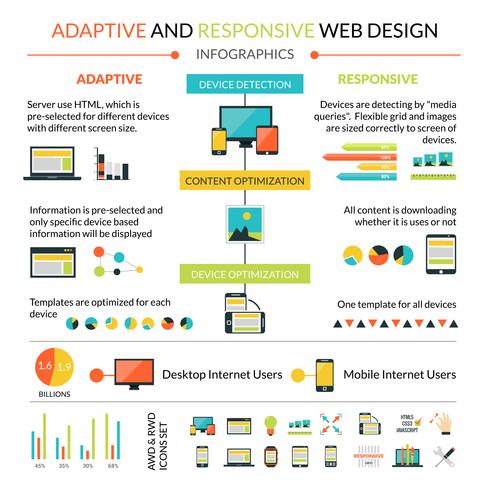Enhance Individual Experience On Your Website By Dealing With Sluggish Loading Rates With These 5 Practical Techniques
Enhance Individual Experience On Your Website By Dealing With Sluggish Loading Rates With These 5 Practical Techniques
Blog Article
Article By-Hedegaard MacKay
To boost your internet site loading rate for far better user experience: press photos, minimize CSS and JavaScript, allow internet browser caching, integrate a Content Distribution Network (CDN), and enhance server response time. Prioritize high quality in image compression. Usage tools like TinyPNG or WebP for far better outcomes. Minimize CSS and JS file dimensions to accelerate loading. Make use of web browser caching to save often accessed sources in your area. Implement a CDN to around the world disperse web content. Minimize server action time by maximizing code and surveillance web server efficiency. Improve your internet site efficiency successfully with these strategies.
Photo Optimization
To maximize your website loading rate, beginning by pressing photos without sacrificing top quality. Big image data can considerably reduce your website, aggravating visitors and influencing your online search engine rankings. Usage devices like Adobe Photoshop, TinyPNG, or Squoosh to decrease picture file dimensions while maintaining visual charm.
When compressing pictures, aim for an equilibrium in between high quality and size. Try out various compression degrees to locate the pleasant area where pictures are crisp and clear, but still lightweight. Take into consideration using contemporary picture layouts like WebP, which supply remarkable compression without jeopardizing top quality.
Along with compression, guarantee that pictures are suitably sized for their display on your website. Avoid submitting large images and relying on HTML or CSS to resize them. Instead, scale pictures to the specific dimensions needed, decreasing unnecessary information transfer and boosting packing times.
Minify CSS and JavaScript
Think about reducing the dimension of your CSS and JavaScript files to maximize your website loading rate. Minifying involves getting rid of unnecessary spaces, comments, and personalities from your code without impacting its performance. By lowering the file sizes of CSS and JavaScript, your web site can pack much faster given that smaller documents are quicker to download and install and process.
To minify https://storage.googleapis.com/premiumwebsitesllc/websitedesign.html , you can utilize tools like CSSNano, UglifyCSS, or on-line minifiers that automatically eliminate redundant code. In a similar way, for JavaScript documents, devices such as UglifyJS, Closure Compiler, or on the internet minification solutions can help enhance your code.
Minifying CSS and JavaScript not just accelerates your web site yet also enhances individual experience by lowering delay times. Additionally, smaller data dimensions can positively influence your search engine rankings because faster-loading websites have a tendency to place higher in search engine result.
Use Web Browser Caching
By enabling browser caching, you can significantly boost the filling speed of your website content. Internet browser caching permits frequently accessed resources, such as pictures, CSS, and JavaScript documents, to be kept in your area on a customer's tool. When a site visitor returns to your site, their web browser can get these files from the neighborhood cache instead of downloading them again from the web server. This lowers the number of HTTP requests required to fill a page, bring about much faster filling times and boosted individual experience.
To Read Far more caching successfully, you can set expiry headers for your web site sources. By specifying how much time browsers should cache certain data prior to looking for updates, you can strike a balance between fresh material and reduced load times. Additionally, think about making use of a versioning system in your file names or applying cache-control headers to control caching habits a lot more specifically.
Material Distribution Network (CDN) Integration
Enhance your website loading rate by seamlessly incorporating a Web content Shipment Network (CDN). A CDN works by dispersing your internet site's static material throughout servers strategically located around the globe. When a user accesses your site, the CDN supplies these static components from the web server closest to them, decreasing latency and accelerating packing times. By leveraging a CDN, you can ensure that your website loads quickly for customers despite their geographic area.
Incorporating a CDN into your internet site is a straightforward process. Most CDN carriers use easy-to-follow instructions or plugins that allow you to set up the service quickly. Once integrated, the CDN will instantly maximize material shipment, caching resources, and reducing the load on your beginning web server. This not only improves loading times but likewise helps in managing traffic spikes and making sure a regular individual experience throughout high-demand durations.
Decrease Web Server Action Time
Improving web server action time is vital for enhancing internet site loading speed. When a customer accesses your web site, the server needs to refine their demand and supply the web page. A slow-moving web server response time can cause delays in packing content, frustrating site visitors and potentially creating them to abandon your site.
To reduce server response time, begin by enhancing your code and database questions. Bloated code and inefficient database queries can reduce the web server's handling speed. Additionally, take into consideration updating your holding strategy to a faster web server or making use of a content delivery network (CDN) to distribute web content extra effectively.
Monitoring your server performance consistently can help determine any bottlenecks or concerns affecting reaction time. By watching on server metrics and efficiency signs, you can proactively resolve any kind of issues that might develop.
Conclusion
Now that you've maximized your website filling speed with these 5 suggestions, image this: your website packing lightning-fast, images turning up instantaneously, and web content showing up perfectly. Users will wind through your web pages, appreciating a smooth and effective surfing experience.
By applying these strategies, you've developed a virtual highway for your site visitors, guaranteeing they've a fascinating trip via your web site.
Maintain the great and view your user experience rise to brand-new elevations!
